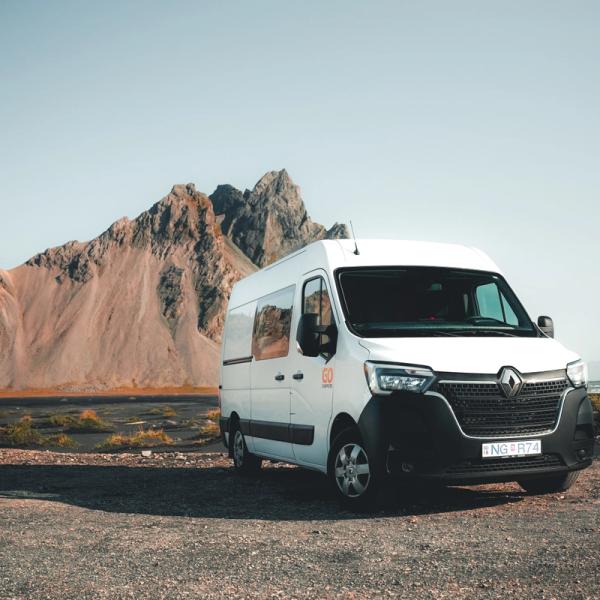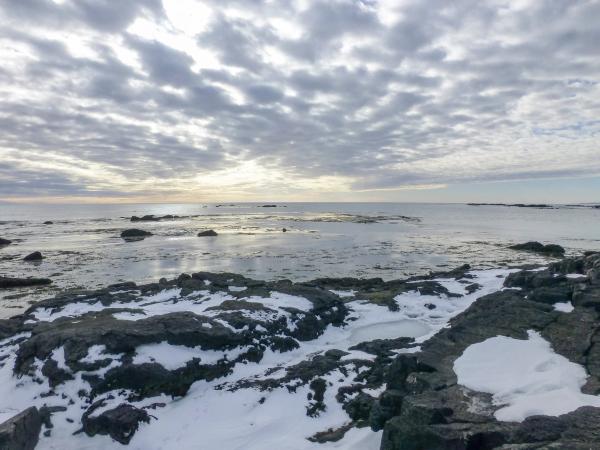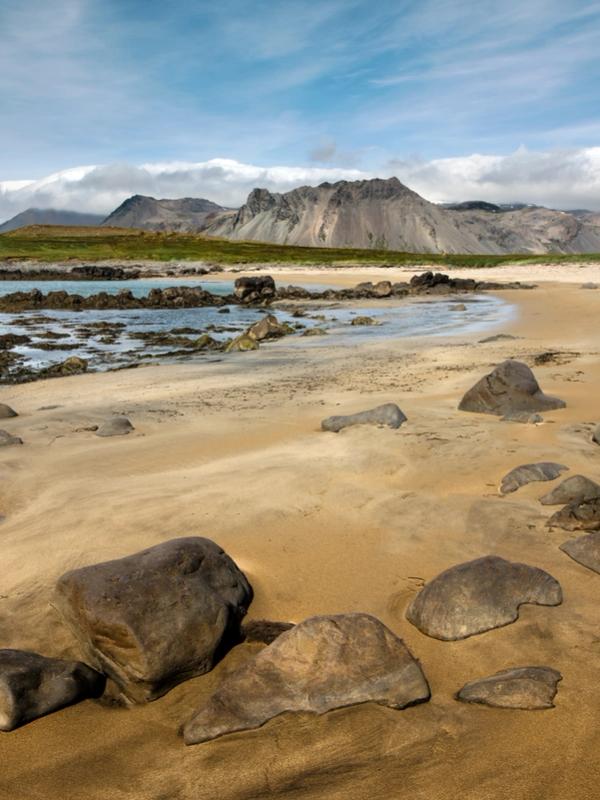
Golden sand and seals: Ytri Tunga Beach
The Snæfellsnes Peninsula in West Iceland is one of the most diverse and unique regions in the country. It has a bit of everything the country’s wild beauty has to offer, and Ytri Tunga Beach is one of its quiet treasures. This stretch of golden sand, a rare find in a country where volcanic black shores are more common, is located on the south coast of the peninsula and features gentle waves and a large colony of seals.
For campervan travelers, it’s a perfect stop to soak in raw nature and spot wildlife. It’s a great addition to an itinerary through this magnificent corner of Iceland, and there are several places nearby where you can park your van for the night.
Key Takeaways
- Ytri Tunga is a golden sand beach located on the south coast of the Snæfellsnes Peninsula, in West Iceland.
- It has a large colony of seals that can be seen swimming or resting on the rocks.
- It’s close to Snæfellsjökull National Park, one of the three national parks in Iceland.
What’s Ytri Tunga?
Ytri Tunga Beach, located on the southern coast of the Snæfellsnes Peninsula, stands out mainly for its color. Most beaches in Iceland are black and of volcanic origin. However, Ytri Tunga has a beautiful golden color, which makes it feel a bit out of place. The beach stretches near an old farm of the same name, and it features gentle dunes and rock formations that create a unique postcard in front of the North Atlantic Ocean. The breeze here carries the scent of salt and seaweed.
However, what makes Ytri Tunga truly special is its seal colony, one of the largest in the country. They are mostly harbor seals, or common seals, with their round faces and sleek bodies. You will see them resting on rocks or swimming playfully near the shore. Sometimes they are joined by grey seals, too. These animals can be seen sunbathing near the beach all year round, but summer is their most active season. Apart from the wildlife, the beach is a fantastic spot to take a walk along the shore. With the distant presence of Snæfellsjökull glacier on the horizon.
Photographers will find endless inspiration in the interplay of light on the sand and the rugged cliffs, while nature lovers can simply sit and listen to the rhythm of the tides.
As we have already mentioned, one of the most striking visual features of Ytri Tunga is its color. In Iceland, most beaches are black, formed from volcanic sand. Here, the golden sand has a different geological origin. It’s a product of centuries of glacial and volcanic interaction, which created certain minerals that have been eroded by the elements over time. It contrasts beautifully with the dark basalt cliffs nearby.
Like many other natural elements in the country, seals also have a place in Icelandic culture. Some legends claim seals are selkies, mythical beings who shift between human and seal forms by removing or adding their seal skin. Today, Ytri Tunga is a protected area for these creatures, and visitors are asked to keep a respectful distance of at least 50 meters to avoid disturbing them. The beach’s unique look, together with its wildlife and striking surroundings, makes it a must-visit for campervan adventurers seeking Iceland’s quieter corners.
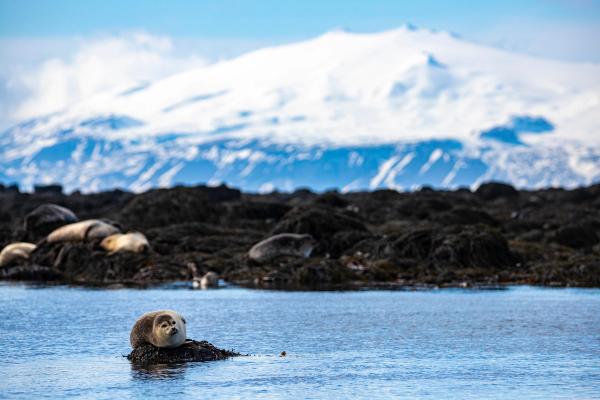
Where’s Ytri Tunga and How to Get There?
Ytri Tunga Beach lies on the southern shore of the Snæfellsnes Peninsula, about 160 kilometers (100 miles) from Reykjavik. It’s possible to make it there on a day trip, but the location of the beach invites adding it as a stop on a larger itinerary through this region.
Either way, if you’re coming from the capital, start by heading north on Route 1, or Ring Road, Iceland’s main road. After 75 kilometers (46 miles), you’ll reach the city of Borgarnes, which is a great place to refuel or grab supplies. Just after the town, turn west onto Route 54, which leads straight to the peninsula. Continue on it for approximately one hour and keep an eye out for a small sign pointing to Ytri Tunga Beach—it’s easy to miss, especially in foggy weather. It’s a road going left from Route 54. From there, it’s just one kilometer until you reach the parking area for Ytri Tunga Beach. The drive takes around 2.5 hours without stops, depending on road conditions. However, you’ll pass some great places to stop and take photos, so tailor your route as you please.
You need to pay around 1000 ISK (€6.90 or $7.80) to leave your car in the parking area. Then, a short, well-marked path—about 300 meters—leads to the beach. The walk is easy and suitable for all ages, though sturdy shoes are helpful in dealing with the pebbles on the trail. There are no additional facilities in the area, so plan to use restrooms at nearby campsites or towns. The route is paved and well-maintained, but it’s always a good idea to check the road conditions before traveling, as the weather can change quickly in Iceland and have a huge impact on the roads.
Where to Stay in Ytri Tunga and Nearby
There’s no camping area at Ytri Tunga, but the Snæfellsnes Peninsula offers several excellent options for campervan travelers, all within a short drive. Below are six recommended campsites in the region.
Arnarstapi Campsite
Distance: 35 km (21.7 miles) from Ytri Tunga. Facilities: Hot showers, toilets, Wi-Fi, electricity hookups, and sink to do the dishes. Opening Period: May to September.
This campground in the charming fishing village of Arnarstapi has a beautiful setting, with astonishing views of the sea and Snæfellsjökull glacier. There is a shop, a gas station, and a restaurant in Arnarstapi, all within walking distance. The campsite also has 13 cottages suitable for two adults and a child if you’re looking for a cozier stay - and they have free Wi-Fi.
Hellissandur Camping Ground
Distance: 47 km (29 miles) from Ytri Tunga. Facilities: Hot showers, toilets, electricity, Wi-Fi, swimming pool, and a playground for children. Opening Period: May to September
Opened in 2011, this campsite is located in the middle of a beautiful lava field. It has a common area with toilets, showers, and sinks. There are also several trails from the camping ground to explore the area. The campsite is operated by the information center in Snæfellsbær, which is located in the next town, Ólafsvík, about 9 km from Hellissandur.
Ólafsvík Camping Ground
Distance: 36 km (22 miles) from Ytri Tunga. Facilities: Hot showers, toilets, Wi-Fi, electricity, and playground for children. Opening Period: June to August.
This campsite is just outside Ólafsvík, one of the main towns on the Snæfellsnes Peninsula, known for the whale watching tours that operate from its harbor. It has flat, grassy pitches and is conveniently located near the town center, making it an ideal base for exploring, with access to shops and other services nearby. The campground also features a disc golf course.
Grundarfjörður Campsite
Distance: 52 km (32 miles) from Ytri Tunga. Facilities: Toilets, electricity and sinks. Opening Period: Year-round, but the services are limited in winter.
It’s a small and simple camping area, but it is well maintained, with flat, grassy pitches. It’s close to Grundarfjörður’s center, with shops, restaurants, and a gas station. Right next door, there’s a swimming pool, too.
Stykkishólmur Camping Ground
Distance: 53 km (33 miles) from Ytri Tunga. Facilities: Toilets, a washing machine, and electricity. Opening Period: May to October.
Located in the peninsula’s largest town, this campsite is ideal for those looking for a basic camping ground near all the necessary services for a campervan trip. There’s also a 9-hole golf course next door where you can rent clubs.
Snorrastadir Farm Holidays
Distance: 51 km (31.7 miles) from Ytri Tunga. Facilities: Toilets, showers, kitchen and electricity. Opening Period: All year.
This is a traditional farm that has been operated by the same family since 1883. It has a camping area and several cabins for up to five people. They also have a guest house with rooms equipped with bunk beds. Surrounded by hills and lava fields, it’s a charming spot for those seeking solitude and a taste of traditional Icelandic farm life.
Most campsites operate on a first-come, first-served basis, but pre-booking via the Parka app is wise during peak summer months.

The Weather at Ytri Tunga
The weather on the Snæfellsnes Peninsula is pretty unpredictable and changes a lot from season to season. Read on to learn what to expect and plan your visit accordingly.
Spring (April and May)
Spring brings unpredictable weather, with temperatures ranging from 0°C to 7°C (32°F to 45°F). Expect frequent rain, occasional snow in the early weeks of the season, and strong winds, which can make the beach feel exposed. Days lengthen week after week, offering more light for seal-watching.
Summer (June to August)
The best time to visit, with mild temperatures of 10°C to 15°C (50°F to 59°F) and long daylight hours. Rain is still common, but calmer winds and low tides expose more rocks for seals to rest on, so there are more viewing opportunities. The golden sand glows under the sun, making summer ideal for photography.
Autumn (September-November)
Temperatures drop to 3°C to 10°C (37°F to 50°F), and storms become more frequent. The beach takes on a different look, with dramatic skies and fewer crowds. Seals are active, but high tides and wind can make spotting them trickier.
Winter (December-February)
Winter is harsh, with temperatures between -5°C and 3°C (23°F to 37°F) and short daylight hours. Snow covers the sand and the stormy sea can make it difficult to see seals. This season requires driving extra carefully.
What to Wear at Ytri Tunga
- Waterproof and windproof jacket: Essential for sudden rain and coastal gusts.
- Insulated layers (fleece or wool): The weather can change at a moment’s notice, and the best way to adapt to these changes Is dressing in layers.
- Waterproof hiking boots: Provide grip on slippery rocks.
- Hat and gloves: Protect against chill wind, especially in spring, autumn, or winter.
- Sunglasses: Useful in summer for glare off the sand and water.
What to See and Do Near Ytri Tunga
Ytri Tunga beach is a great destination in itself, but it’s also conveniently close to many other amazing natural attractions. The Snæfellsnes Peninsula is often called “Iceland in miniature,” because it has a bit of everything this country has to offer.
Snæfellsjökull National Park
This park, centered around the glacier-capped Snæfellsjökull volcano, is a playground for nature lovers. Several hiking trails wind through lava fields, past bubbling springs, and close to the cliffs, showcasing the diversity inside the park. The volcano is a place of literary fame, as it’s where Jules Verne located the entrance to the underworld in Journey to the Center of the Earth.

Kirkjufell Mountain
This peak is considered to be Iceland’s most photographed mountain, due to its iconic shape that rises dramatically near Grundarfjörður. Its name means “church mountain” as it looks like a church’s steeple, although some people say it looks more like a witch’s hat. It looks especially amazing paired with Kirkjufellsfoss, a waterfall close to the base of the mountain. There’s a parking area near the waterfall, and there are trails that depart from it to explore the area.
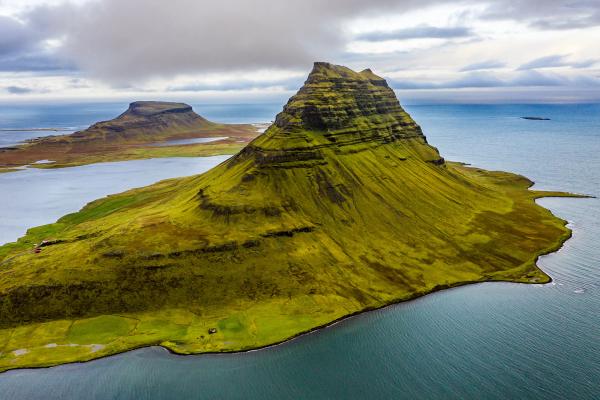
Djúpalónssandur Beach
This black pebble beach, framed by towering lava formations, is a completely different look to Icelandic beaches compared to Ytri Tunga. The beach is also a site of historical interest, with remnants of a British trawler that was wrecked here in 1948 scattered on the rocks. As you walk along the shore, you'll come across four large stones. These stones were traditionally used to test the strength of fishermen, with each stone representing a different level of strength. Even today, visitors can try to lift them.
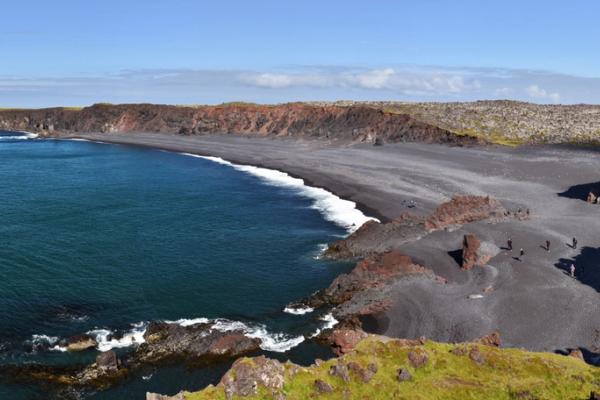
Búðakirkja
The tiny black wooden church of Búðakirkja, built in 1848, stands alone in the middle of a lava field. Búðakirkja is one of the few remaining black churches in Iceland and has become a symbol of the country's minimalist architectural style.
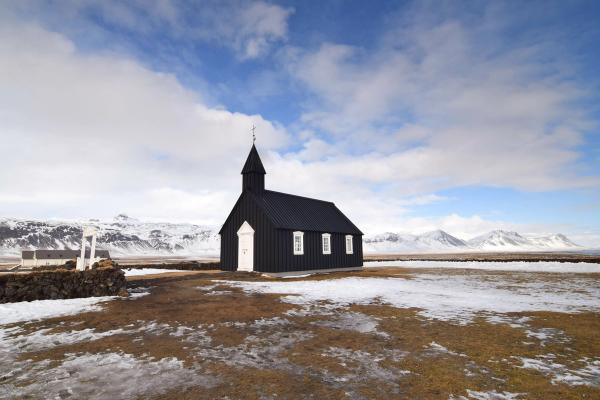
Rauðfeldsgjá Gorge
This hidden ravine, carved into a cliff, is like a passage to a secret world. There’s a narrow and challenging trail that leads to a chamber where you'll find a small waterfall pouring down on the rocks. There’s a parking area close to the gorge’s entrance.
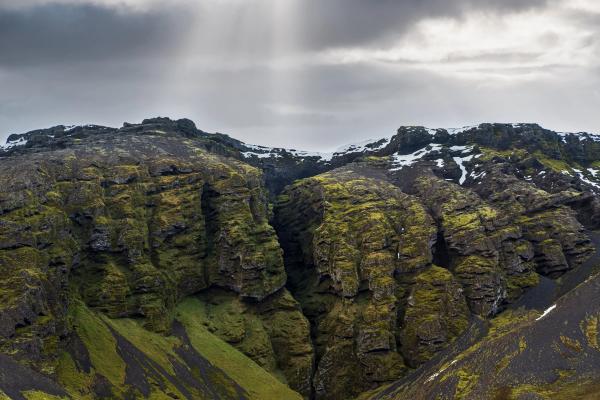
Arnarstapi Village
This quiet and charming village is quite close to Ytri Tunga Beach. The town features the statue of Bárður Snæfellsás, a mythical half man, half troll, who protects the Snæfellsnes Peninsula. There’s a short and easy path that connects Arnarstapi with Hellnar, another fishing village. The trail goes by cliffs, with amazing views of the cliffs and the iconic Gatklettur stone arch.
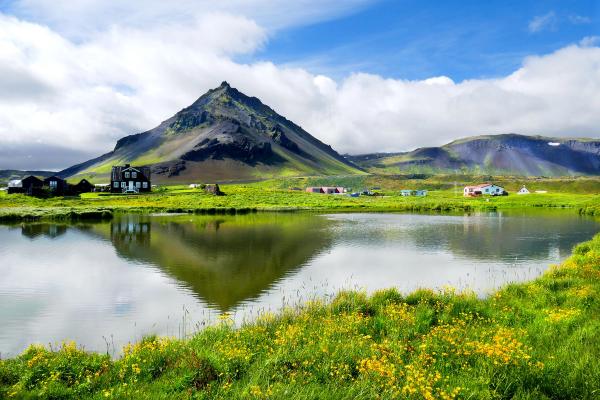
Travel Tips
- Check Tide Times: Low tide exposes more rocks, which increase the chances of seeing seals. Apps like TideChart can help plan your visit.
- Bring Binoculars: They allow closer views of seals without breaching the 50-meter distance rule.
- Respect Wildlife: Avoid loud noises or sudden movements to keep seals calm.
- Monitor Weather: The weather is unpredictable and changes quickly. Check the local forecast to be prepared.
- Pack Snacks and Water: There are no facilities at Ytri Tunga, so bring food and water for your visit.
- Drive Safely: Stick to roads, as off-road driving is illegal. Some roads in the region are gravel, which can require a 4x4 vehicle under wet conditions.
- Save with the Camping Card: For multi-site stays, the Iceland Camping Card offers good value across the peninsula’s campsites.
Conclusion
Ytri Tunga Beach is a slice of Iceland’s wild heart, where golden sands and curious seals create a scene both peaceful and unique. For campervan travelers, it’s a chance to pause, breathe, and connect with a part of Iceland that has a lot to offer. It’s a great stop to add to an itinerary through this great region, which has several great camping grounds where you can rest after a day of exploring.

